How to Remove Stains from Plastic Cutting Boards
This post may contain affiliate links. If you purchase through links on our site, we may earn a commission.
I was making one of my favorite meals the other night-Burrito Bowls-when I noticed that my plastic cutting board had some major stains, even after I washed it. A quick google search gave a lot of options for how to remove the stains but after trying multiple so called “solutions” without success I was getting irritated. To combat the widespread misinformation I was finding I decided to share my results in hopes of saving you time when you need to remove stains from plastic cutting boards in the future! You might be surprised by the results!
If you are trying to remove permanent marker, read my guide for removing permanent marker from anything!
Solution #1: Lemon Juice
Real Simple magazine told me simply rubbing lemon juice on my cutting board and letting it soak would remove the stains. Nope. Nothing.
Solution #2: Lemon Oil
I found this tip from One Good Thing by Jillee but unfortunately it didn’t work for me either. Granted she set hers in the sun after the oil was applied to help bleach it out and I wasn’t able to do that on a rainy winter day so that may be the difference.
Solution #3: Thieves Cleaner
I’m a Young Living junkie so I had to try my favorite cleaner before I started looking at more traditional cleaners once I realized the more natural approaches weren’t working. Again, no change at all.
Solution #4 Baking Soda & Vinegar
I use this combo to clean a lot of things, including my kitchen sink, so I figured it was worth a shot since it’s such a great cleaning and deodorizing method. I thought there was a slight improvement but it was so subtle pictures didn’t even show it.
Solution #5 Clorox Clean Up Cleaner
Now it was time to break out the big guns-my Clorox Cleanup cleaner. I thought this was going to be the answer but alas, NO IMPROVEMENT! I couldn’t believe it! I had one more idea to try before I was going to head to the store to buy a new cutting board…
Solution #6 Undiluted Bleach
I was off to the laundry room for some straight bleach. I knew this was the last chance so I was very curious how it was going to work. I poured the bleach on and let it sit for 30 minutes, then rinsed it off. You can see the results:
Not perfect but a HUGE improvement. I decided to give it one more round and after that it came completely clean!! Yay!!
The undiluted bleach was obviously the clear winner here. While I had hoped to find a more natural method sometimes you have to go the traditional route. I know my cutting board stains were pretty severe (poor thing is over ten years old!) so I can’t say definitively that the other methods I tried won’t work with lighter stains but I know they were no match for mine.
What do you think-do you have any other solutions I didn’t try?

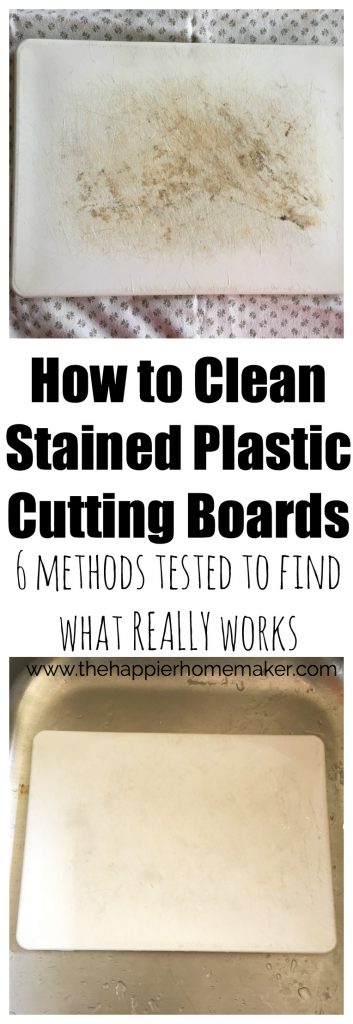
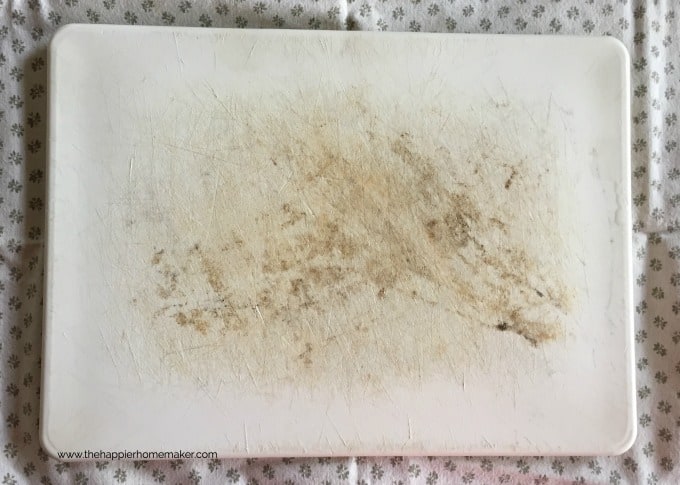
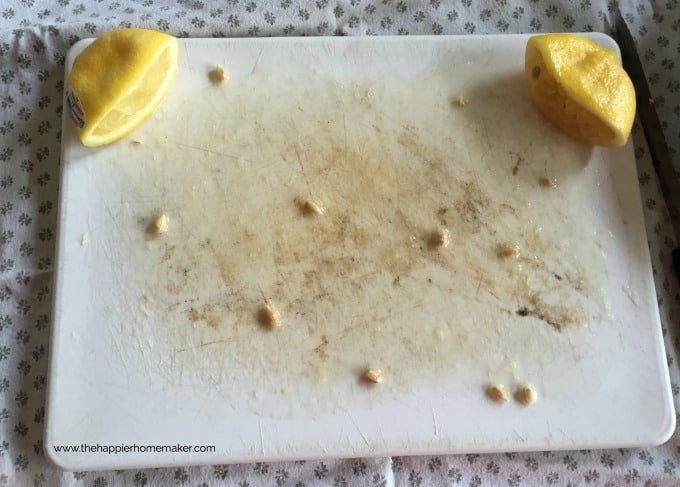
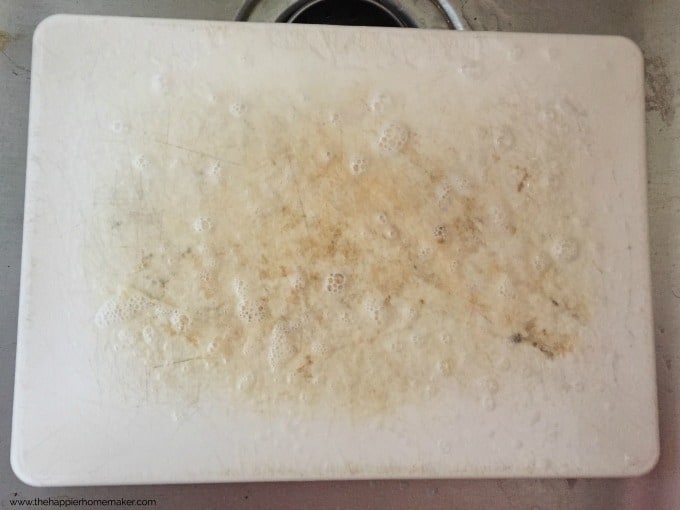
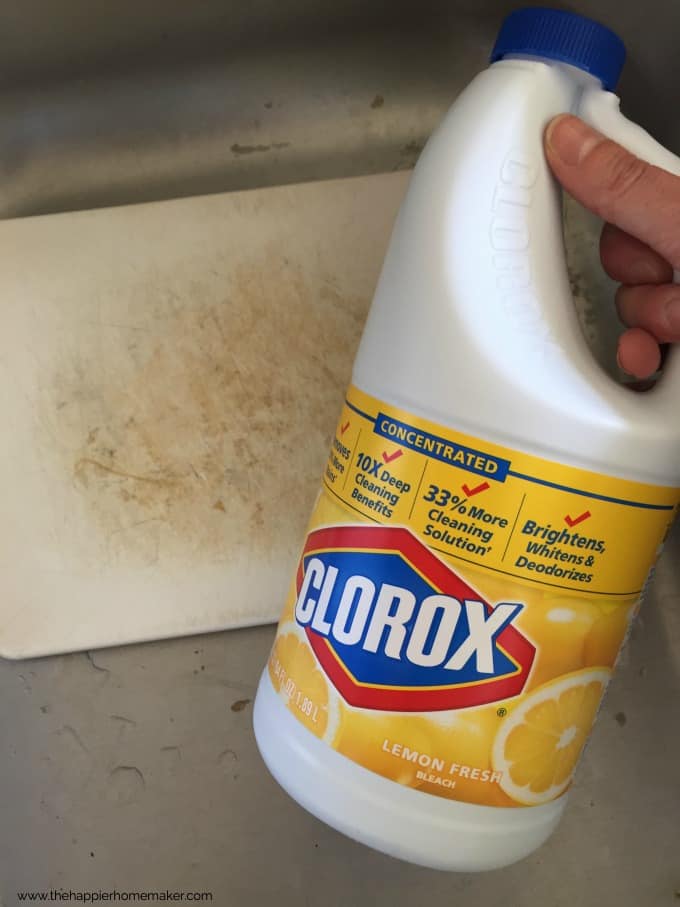
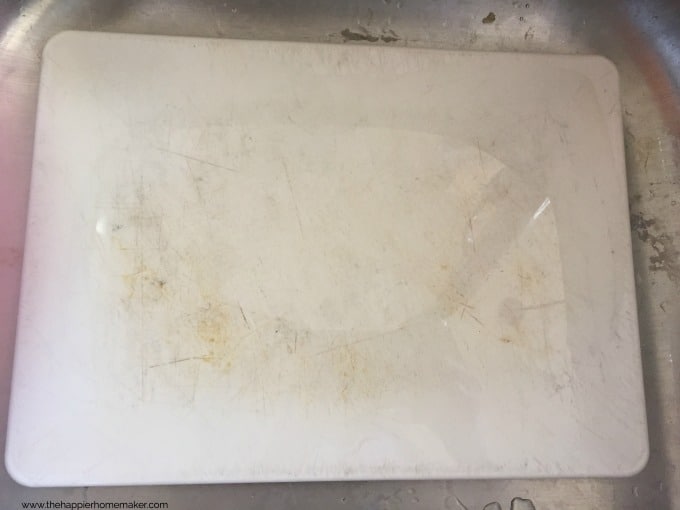
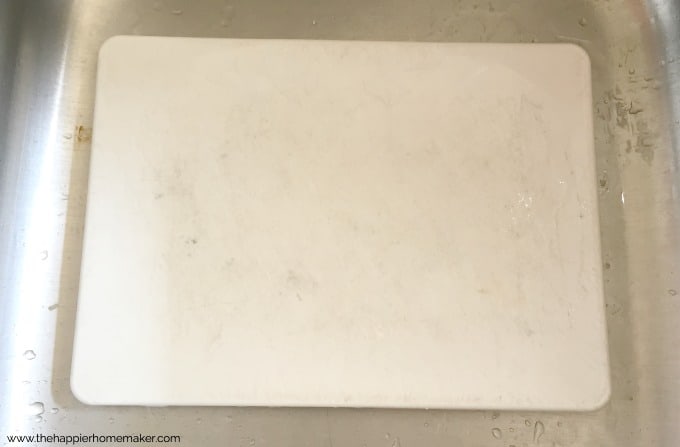
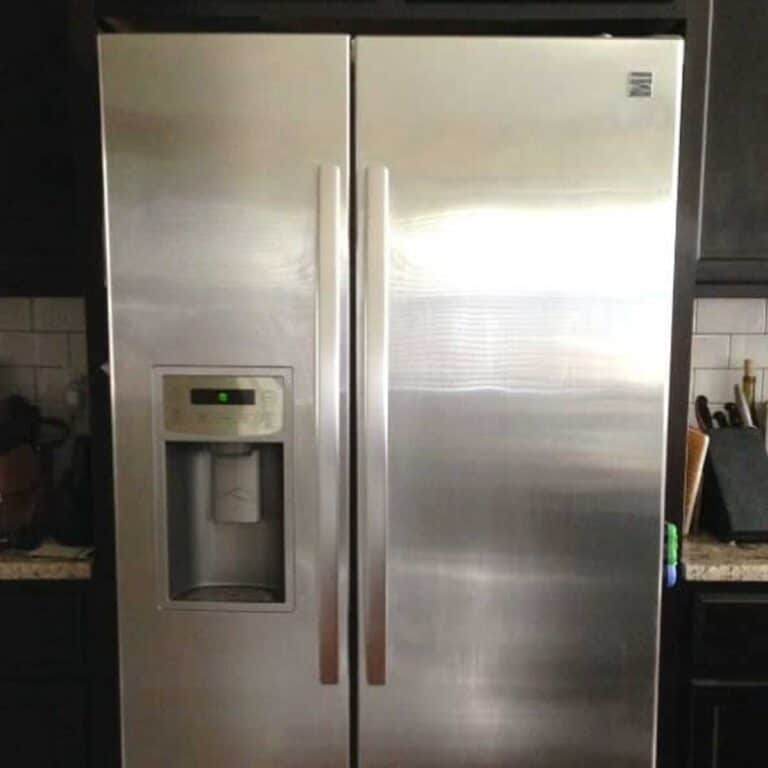
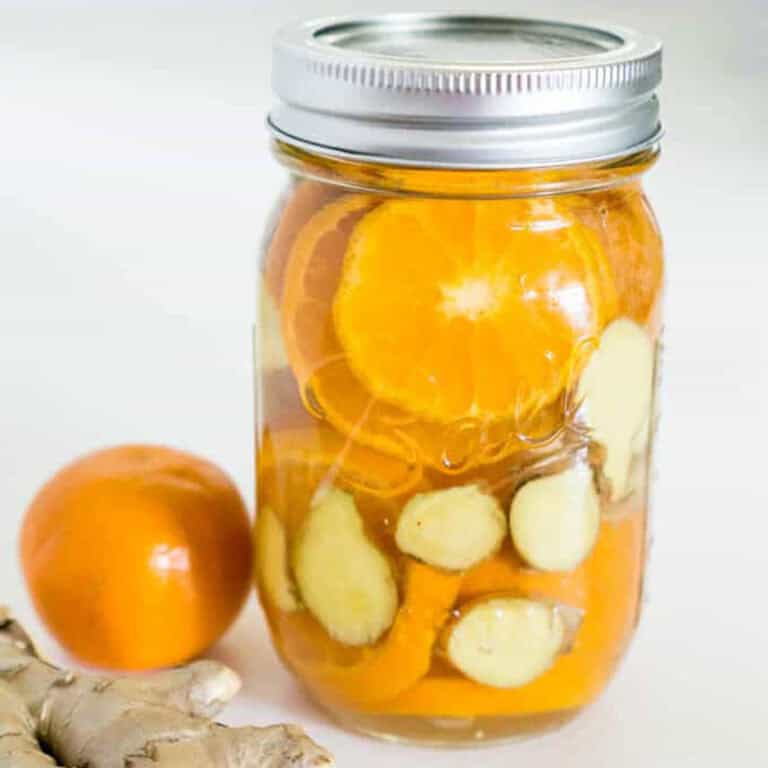
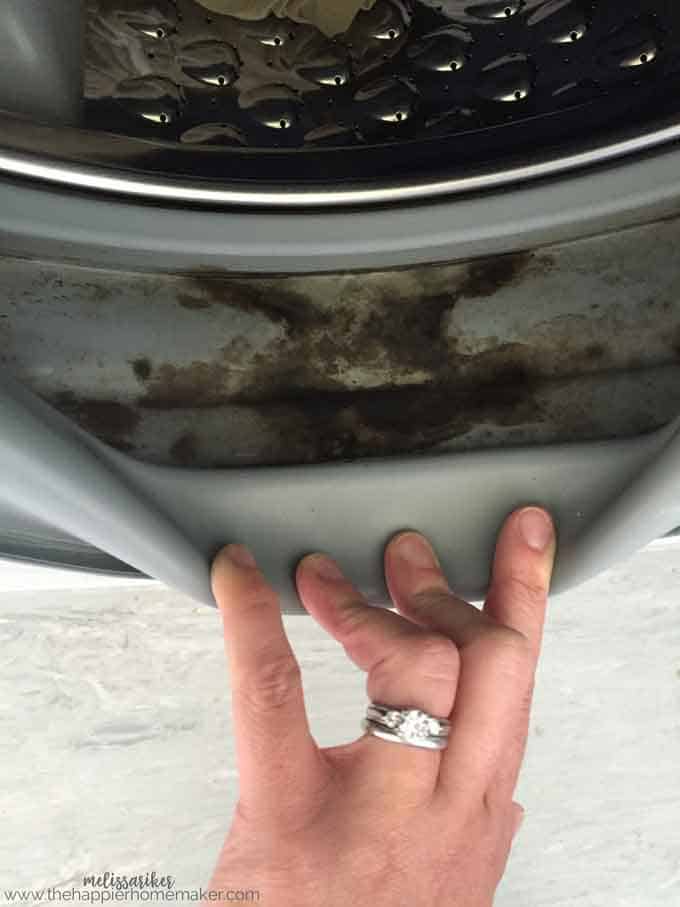
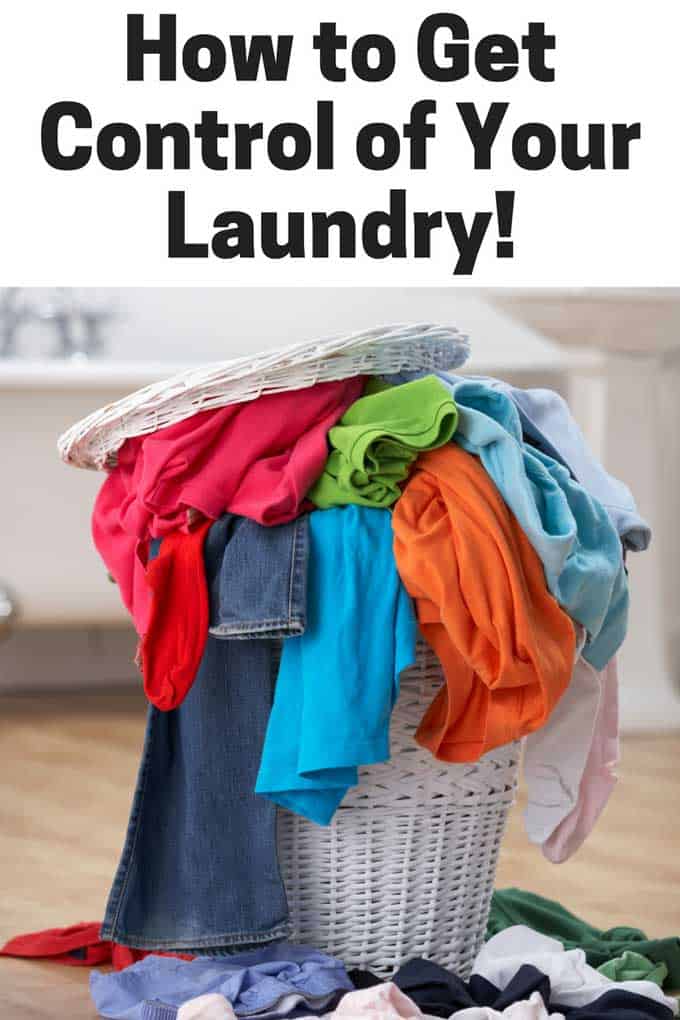
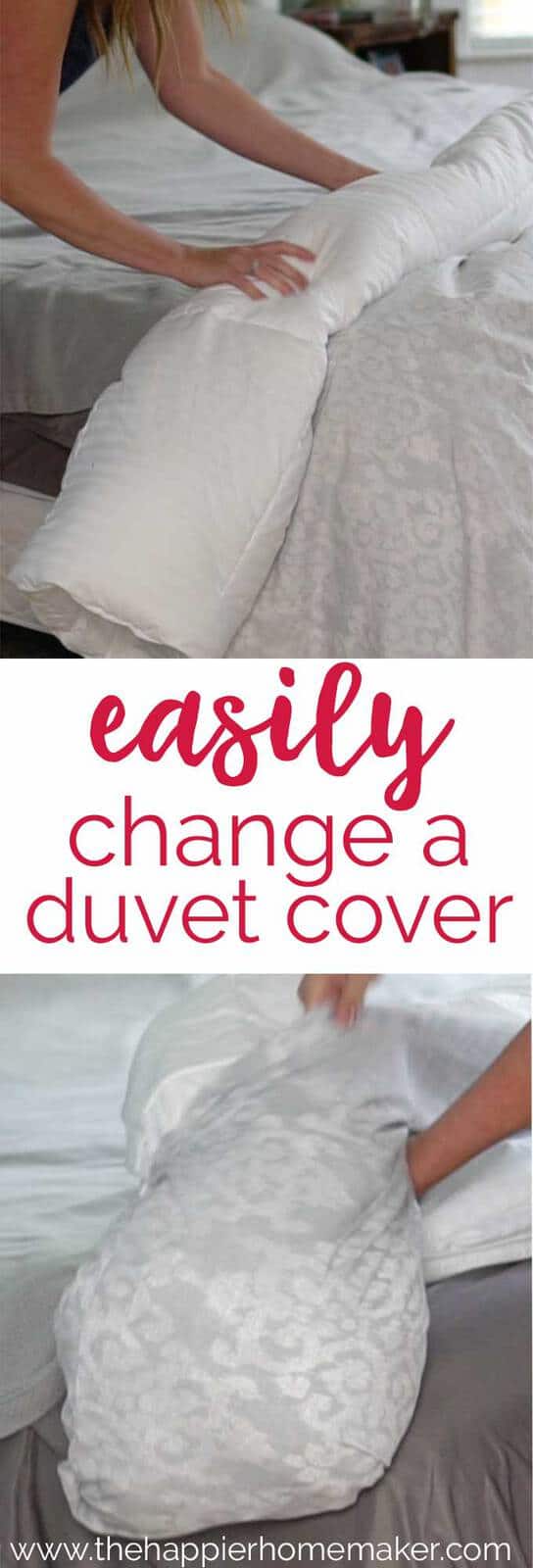
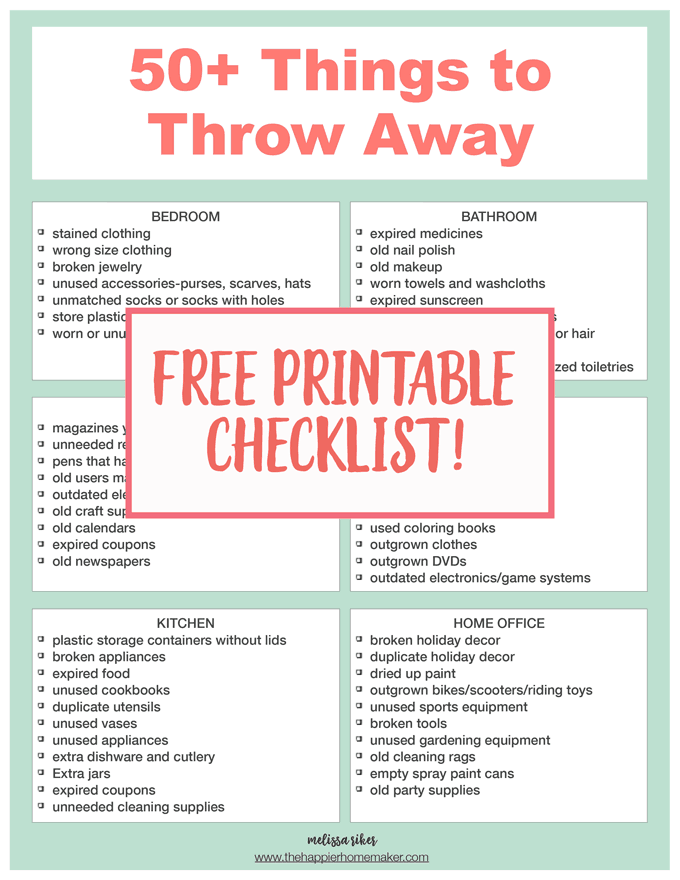
Hi Melissa,
I tried your undiluted bleach method on my stained plastic cutting board and it worked like a charm! Granted, mine wasn’t stained nearly as bad as yours. I let the bleach sit on the board for 30+ minutes before I washed it off. I also lightly agitated the darker stains with an old toothbrush but for the most part just letting it sit did the trick. It looks almost new again.
So glad it helped!!
Me method of cleaning the white plastic cutting board is to fill the kitchen sink with about 4 inches of water and pour approximately half a cup of household bleach (Javex in my case) in to that water. Put the cutting board in the water and put a glass cup full of water to weight down the cutting board so it sits under the water. That way all surfaces will be covered. Let sit overnight in the sink. Next day, drain water mixture and rinse thoroughly with fresh water. Then use some dishwashing detergent mixed with water in the sink, and scrub both sides of the cutting board to remove and residue that might still be on the cutting board. I use a floor scrubbing brush and only use it for this purpose, nothing else.
Thanks for the tip, I’ll definitely try that!
Hi everyone, If you are using cleaners or bleach on things a good way to get residue off is to give it a vinegar rinse after you wash all the cleaner off. Vinegar takes off all residue and is even good in the wash.
great tip!
I am fairly sure you are not supposed to use undiluted bleach on food surfaces. It is corrosive, and to me seems like a terrible idea. It may remove the stains, but I would rather live with stains than expose my family to toxic bleach.
Chlorine bleach breaks down into table salt and water… I agree it is very toxic before that point, but after breakdown it is not. Diluted bleach breaks down much faster, which is why a 10% diluted solution only works for germ killing for a day or so. It is hard to imagine this approach to destaining a cutting board would leave dangerous residue after rinsing and sitting…
Thanks for that insight!
Im scrubbing the white plastic cutting boards with dishwashing soap yhrm applyong Bleach and applyong bleach and leaving for 10 minutes. All the stains comes . but i cant get the residual black syains on the knife cuts on the white plastic board. I will try the baking soda bleach paste next time. Im working in a combercial kitchen. Any suggestions? Can i use sandpaper from Home depot and sand the sides where the knife marks are concentrated?
I take paper towels and put them on the cutting board. Put bleach on the paper towel so that the bleach doesnt run off. Leave it over night. Rinse it really well. All comes off.
great idea
what of for shopping boards that arent white?
Straight bleach and several minutes of letting it “stand” on the stain always works for me. Orange from my carrots is a frequently recurring battle! 🙂 I use straight bleach for cutting boards and toilets. But that’s it. I don’t even use it for laundry! LOL!
What kind of bleach are you using?
I think lemons are considered as the best for the removal of stains.
I found that bleach mixed with vaking soda to make a thick paste works. Just add a cpl tbsp of bleach to a half or so cup if soda and mix. It should be really thick. Then leave it on for 15 mins and wash. I also use it around the tub when the caoulking gets stained.
Totally meant baking soda lol
This worked better than I imagined. Looks brand new. I left it on for 30 minutes because I got busy and forgot about it. Working on side 2 now. THANKS!!!
Great! I’m so glad it helped!
bleach did not work either, still black streaks from cutting some veggies on it.
Hey, thank you very much. Our cutting board is WRETCHED !
Happy holidays, and thanks again.
Jack Lyons, near San Francisco
I used my steam cleaner. Just hot water. Works like a dream.
Sandpaper. Just sit outside on a nice day and sand that puppy down. Start with coarse grit and work your way toward fine grit. It’ll be like new and get rid of those germ-harboring cuts, too.
I usually have it go through a washing in the dishwasher when it’s stained, It works.
I’ll try that Marguerite, thank you! ~Melissa
It did not work for me.
Applying a paste of baking soda and hydrogen peroxide and leaving it for a few hours may work. Though bleach will be more powerful than anything else.
That’s my usual method too! ~Melissa
I use Clorox clean up and apply a paper towel and it work s famously. I do this on a very regular basis.
It looks to me that your cutting board needs to be replaced. All of the stains on the board represent deep cuts into the board which harbours bacteria that are trapped within the cracks. Bleach may be a temporary solution, but it might have to be repeated often.
I agree Doreen, this was the first time it didn’t come clean in the dishwasher so it’s on the way out the door as soon I can buy a replacement!
I prefer to use natural products whenever possible, but there are times when only bleach will do. I find no matter what methods or products I use for some jobs they aren’t a patch on good old bleach, for example, keeping grout and the dap around the shower spotless, and like you for thoroughly cleaning stains on chopping boards. There are a million blogs and videos about using vinegar and baking soda etc for all sorts of jobs around the home, but quite honestly any real deep cleaning has to go to bleach 🙂
I agree Angela, I always try the natural stuff first but sometimes it just doesn’t cut it (my three little boy’s bathroom is another place that bleach is always necessary!)
Do you all not realize you all are inserting poison into whatever you decide to cook? Throw the board out if you’re going to use bleach on it!
ummm marti, one would wash the bleach off the cutting board prior to using it…duh
Even if washed off there remains a residue of the bleach on the cutting board that is poisonous. I have a gf who was Mrs Vlean with bleach…it cost her family the life of one of her children because bleach is TOXIC!!! Still willing to take that chance?! @Drew??